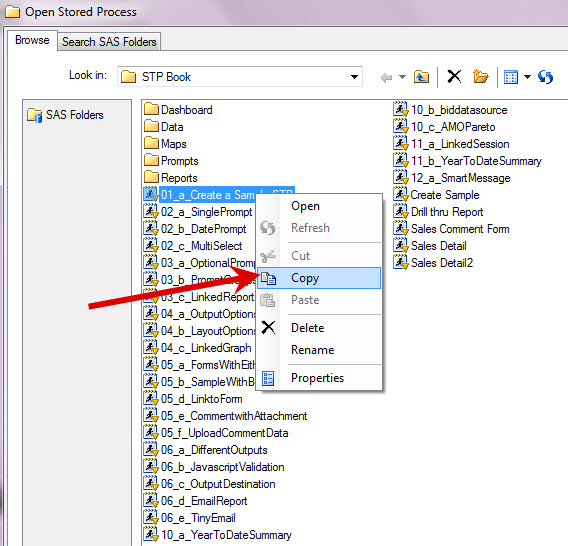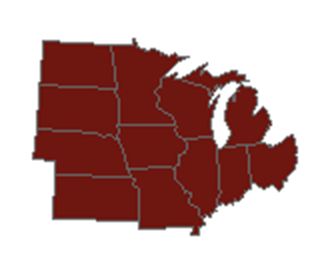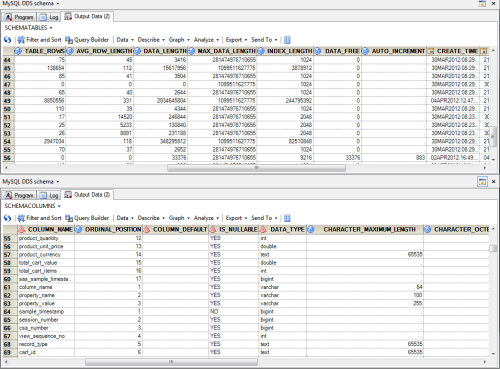
What if you would like to make a copy of an existing stored process to test out your changes before making them live? The copy command is available from within SAS Management Console or from the SAS Enterprise Guide Open Stored Process GUI as seen below (note you can only


























